
DESCRIPTION
These instructions explain the proper procedures for installing and testing nVent
RAYCHEM TraceTek TT500X-HUV sensing cables. (TT500X-HUV refers to
either TT5000-HUV or TT5001-HUV). TT500X-HUV sensing cables are primarily
intended for use on overhead piping, vertical pipe, valves and manifolds and
other fittings where fuel or solvent could leak. TT500X-HUV sensing cables
can also be used on floors, in drip pans, in sumps and trenches. TT500X-HUV
sensing cables ignore water but will detect and locate fuel or solvent spills and
leaks. (See the data sheet for specific performance characteristics.)
Important Notes
When used to monitor suspended or rack mounted pipe, TT500X-HUV
sensing cables must be attached to the pipe system at the lowest point
where any liquid leak is most likely to drip from the pipe. Usually this
will be the 6 o’clock position on horizontal piping but other mounting
locations and techniques may be necessary if site conditions are unusual.
In particular, special consideration should be given to pipe supports,
couplings, “T’s”, valves and other fittings. It is the responsibility of the
installer to position the cable such that any leak will drip onto the cable.
TT500X-HUV sensing cables are designed for indoor or outdoor
environments. The TT500X-HUV is a small diameter, flexible cable consisting
of four wires wrapped around a central core. An outer layer rope-braid of
synthetic fiber provides further protection from UV radiation. TT500X-HUV
cable can be exposed to sunlight, rain, snow, fog, condensation, dust,
blowing dirt and other contaminants without causing a false alarm.
GENERAL NOTES: DO’S AND DON’TS:
TOOLS REQUIRED
Cutting shears Shears with serrated blades
nVent RAYCHEM TraceTek
TT-PTB-1000
(part # 486437-000)
Portable Test Box, battery powered instrument
specifically designed for testing and trouble
shooting TraceTek systems
Ohmmeter
(>20 M ohm)
Can be used as an alternative and supplement to
the PTB 1000
nVent RAYCHEM TraceTek
TT-MAPPING CAP-MC
(part # P000000871)
Used to simulate leaks at connector points during
commissioning and mapping process
Extra TT-MLC-MC-BLK
(part # 133332-000)
Leader cable. Used with the ohmmeter to make
connections to the sensor cable for resistance
measurements
Extra nVent RAYCHEM
TraceTek TT-MET-MC
(part # 571293-000)
End termination. Used during installation
or trouble shooting to temporarily isolate a
sub-section of sensor cable for resistance
measurements.
nVent RAYCHEM TraceTek
TT-ULTRA-TORCH
(part # 390067-000)
Flameless heating tool (Ultratorch 200) or suitable
heat gun with concentrator tip
REQUIRED MATERIALS
nVent RAYCHEM TraceTek
TT–PU–FOAM–2x0.5
(part # P000001136)
2-inch wide foam with adhesive backing
nVent RAYCHEM TraceTek
TT–VSTRAP–1.5x75FT
(part # P000001135)
Fastening strap
Rags and appropriate
cleaner
Use to wipe and clean bottom and side surfaces
of pipe prior to cable installation
Heat shrink tubing
segments
Used as environmental seal over all mated male/
female (pin/socket) connections
OPTIONAL MATERIALS
nVent RAYCHEM TraceTek
TT-MBC-MC-TW
(part # P000001206)
Branch connector designed for rugged outdoor
applications used to connect and branch "T" lines
nVent RAYCHEM TraceTek
TT-MJC-XX-MC-BLK
Jumper cable is available in various pre-cut and
terminated lengths
nVent RAYCHEM TraceTek
TT5000–HUV–CK–MC–M/F
(part # P000001207)
Connector kit used during field connection of
TT5000-HUV bulk cable
• TT5000-HUV sensing cable is identified by the
red TRACER in the black outer jacket.
• TT5001-HUV sensing cable is identified by the
purple TRACER in the black outer jacket.
TT5000-HUV(for fuel leaks) TT5001-HUV(for solvent leaks)
TraceTek Sensing Cable for Aboveground Leak Detection
Installation Instructions
DO:
• Store the cable in its original container in a clean, dry area until
ready to install.
• Clean the pipe surface where the cable will be installed.
• Schedule the sensor cable installation as late as possible in the construction
schedule to avoid risk of damage or contamination by other contractors or
construction tasks.
• Remove cable from the pipe if any thread cutting, welding, soldering or
similar pipe fitting work will be performed.
DON’T:
• Drag the cable through water, paint, solvents, oil or other contaminants.
• Install damaged or contaminated sensing cable.
• Exceed the maximum pulling force of 100 kg (220 lb).
• Use the cable as a rope for lifting or securing any object.
• Allow tools or heavy objects to fall on cable.
• Exceed 3300 ft (1000 m) of individual sensor cable circuit length when using
a SIM alarm module.
• Testthecablewithfuel. • Usetiewraporwiretosecurethecable.

2 | nVent.com
End termination
Cable connector with pins
toward alarm module
1
3A
2
3B
Clean and prepare the pipe or area where the cable
will be installed.
• Verify that major construction is complete.
Clean the bottom and sides of the pipe where the cable will
be installed to remove any residual oily waste or contaminant
For connectorized cable connect a Modular End
Termination (TT-MET-MC) to the first sensing-cable length
to be installed.
Check each length of connectorized sensing cable
before installation.
• To ensure that each length of sensing cable is intact and free
of contamination, follow the Sensing Cable Test Procedure.
Do not use damaged or contaminated sensing cable.
Bulk (unconnectorized) cable will be checked during the
connectorization process.
• Observe the do’s and don’ts under “General Notes” on
page1oftheseinstructions;takecaretoavoiddamaging
orcontaminatingsensingcable.
For connectorized cable orient sensing cable so the
connector used with the end termination will be the
furthest away from connection to the TraceTek alarm
module. Work out from the alarm module connection.
Installation
For bulk (unconnectorized) cable, orientation does not
matter for this step.
For sensing cable on reels (lengths over 10 feet [3 m]), put
the reel on an axle and pull the cable out.
TRACETEK

nVent.com | 3
3D 3E
Connectorization procedure for bulk cable
Bulk (unconnectorized) cable is generally connectorized after
fastening cable to pipe. Refer to TraceTek document H54830 for
detailed instructions regarding connectorization procedures. If
bulk cable is cut and connectors will not be immediately installed,
use shrink tubing or tape the cable ends to protect cable integrity
(water/physical damage).
Test each length of connectorized sensing cable after
installing it and before attaching it to cable already
installed. Confirm that the sensing cable is clean and
intact by following the Sensing Cable Test Procedure.
Prior to installing a new length of sensor cable, push heat
shrinkable tube onto the cable. Connect the sensing cable
to the cable circuit (lengths of sensing cable connected in
series) previously installed.
• Mark the connector position on the layout plan.
• Install
nVent RAYCHEM TraceTek mapping tag (TT-TAG).
• Note: As an extra precaution on large installations, periodically
testtheentirecablecircuittoconrmthatallinstalledsensing
cable is still clean and intact.
• Unplug the end termination and connect it to the next length of
sensing cable to be installed.
Repeat the installation sequence for each length of cable.
Maximum
offset = 1/4 in
Fastening strap
Sensor
cable
Foam
cushion
3C
Install sensing cable in accordance with the leak
detection layout plan.
• Verify the pipe bottom has been cleaned and dried to ensure proper
adhesion of the foam strip to the pipe.
• VerifysucientstockofAdhesiveFoamStriponhandforjob
(TT-PU FOAM-2X0.5 part # P000001136). Plan on about the same
length of foam strip as sensing cable to be installed.
• VerifysucientstockofFasteningStraponhandforjob
(TT-VSTRAP-1.5X75FT part # P000001135). Plan on four times the
pipe diameter for each strap. Desired strap overlap is 25%.
• For each length of sensing cable to be installed, prepare an
adhesivefoamstripofcorrespondinglength.Installthefoamrst,
then the sensing cable.
• Best results are obtained from completely installing one section of
foam/sensing cable/strap before moving on to the next section.
• Align a short section of foam strip along the bottom of the pipe
at the 6 o’clock position. The foam strip is 2-inch wide, to provide
some tolerance for minor misalignment. The foam acts as a sponge
to soak up leaking liquid as it reaches the bottom area of the pipe,
to enhance the ability of the sensor cable to detect a leak.
• Install the foam strip by removing the release paper covering the
adhesive. Do not remove excessive lengths of release paper, as the
adhesive may become dirty. It is better to remove short sections
of release paper. Starting at one end of the foam strip, press the
adhesivesidermlyontothepipe,thenremoveanothershortsection
of the release paper and repeat the process. Be careful to maintain
the centerline of the foam strip at the 6 o’clock position on the pipe.
• After a foam strip segment has been secured against the pipe, take
the sensor cable and position it at the 6 o’clock position on the pipe
(should be in the center of the foam strip). Position the cable to be
snug against the foam, with no visible sag.
• Secure the cable against the pipe with the fastening strap. The
preferred strap method places the soft side of strap against the
sensing cable. Use a strap overlap position at the top of the pipe.
Place one end of strap at top of pipe. Wrap the strap around the
pipe.Beforecinchingthestrapintonalposition,verifythesensing
cableisat6o’clockposition.Thenpressthefreeendofstraprmly
into the captive end of strap-make sure strap has no air gaps within
connected surfaces. The strap should be applied with about a 25%
overlap of the free end over the captive end.
• Use one fastening strap every 18 to 20 inches of pipe length (450
to500mm)withextrastrapsusedatttingsorbendsasneededto
maintainasnugtofthesensorcableagainstthepipe.
• After every 5 strap applications, remove any excess slack in the
sensing cable.
• Aroundanges,toenhanceleakdetectionapplyfoamaroundthe
bottomhalfoftheangetoabsorbpotentialleaks.Thenrunthe
sensingcableacrossthefoamatthebottomoftheangeatthe
6 o’clock position.
Note: Do not use nylon or steel tie wraps to secure the sensor
cable—this will result in false leak alarms.
Important: It is the installer’s responsibility to position the sensor
cable correctly. The cable must trace the lowest point of the pipe or
ttingssuchthatanyliquidleakingfromthepipeorttingswilldrip
ontothecablesurfaceasitdripsoffthebottomofthepipeortting.
Do not install the cable on the top or side surface of a pipe. Do not
spiral the cable on horizontal pipe.
Exception: If the cable is used to trace vertical pipe, the cable should be
spiraled around the pipe and secured with fastening straps.

4 | nVent.com
TTC-1, TTSIM-1, TTSIM-1A,
TTSIM-2 or TTDM-128
TT-MET-MC
TT5000-HUV
TT-MLC-MC
SCT
SCT
Heat-shrinkable tube
Modular
leader cable
Modular end
termination
TRACETEK
4
5
Complete the system
1. Install other TraceTek components (such as Modular Branching
Connectors, Weighted Lengths, and Modular Jumper Cables) as
called for in the system layout. Complete the sensing circuit.
Note: All components of the system have male or female metal
connectors or both. The male connectors are oriented toward the
instrument panel. As new sections of cable are added to the main leg
or branch, each newly added section should end with an open female
connector. The end of each branch or main leg is terminated with a
male end termination.
2. Testthesensingcircuit(orportionsofit)toconrmthatthe
sensing cable is clean and intact. Follow the Sensing Cable
Test Procedure.
3. Locate the unlabeled heat shrink tubing segment (delivered along
with the TT500X-HUV connectorized cable, or as part of the
TT5000–HUV–CK–MC–M/F connector kit.) Install the heat shrink
tube as environmental seal over all mated male/female (pin/socket)
connections.
• Center the unlabeled shrink tube over the pin/socket connection.
Heat shrink the tube over the connection, beginning in the center
and shrinking towards the ends until the tube fully conforms
totheshapeoftheconnectionandadhesiveowsfromeach
end of the tube.
• Avoid overheating the thin wall unlabeled shrink tubing. The thin
wall tubing requires less heat than the SCT cable shrink tubing.
• Let the entire connector area cool before handling the cable.
Note: Do not leave connector open to environment. If the connector
becomes wet or contaminated, it will need to be replaced.
Note: When arranging any TT500X-HUV cables do not use a bend
radius less than 2 in. (51 mm).
Note: If a heat-shrinkable tube must be removed (for example, for
cable testing), refer to Oversleeve Removal Instructions (H54258).
4. ConnectthesensingcircuittotheTraceTekalarmmodule
and activate the system as soon as is practical. Use the
alarmmoduletomonitorforeventsduringthenalstages
of construction.
CAUTION: Burn Hazard. Do not get hot adhesive on
your bare skin. The hot adhesive will burn your skin.
Take precautions if installation is incomplete
at end of work day.
At the end of the work day:
• Ensure that there are no exposed connectors. Each sens-
ing cable should be connected to a Modular Leader Cable
(TT-MLC-MC), Modular End Termination (TT-MET-MC),
and/orothersensingcables;checkbothendsofthecable.
• Test and record the condition of installed sensing cable
following the Sensing Cable Test Procedure.
• If practical, connect the installed sensing cable to the TraceTek
alarm module. Test the system and put it in operation following
the alarm module installation instructions.
At the beginning of the next work day:
• Check that the installed sensing cable is clean and
intact following the Sensing Cable Test Procedure.
Compare the results with those obtained at the end
of the previous work day. If necessary, investigate
and correct problems before proceeding.
FIRE HAZARD. Heat guns and flameless
heating tools can cause fire or explosion
in hazardous areas. Be sure there are
no flammable materials or vapors in the
area before using these tools. Follow all
site safety guidelines when working in
hazardous areas.
Component approvals and performance are
based on the use of specified parts only.
HEALTH HAZARD. Overheating
heat-shrinkable tubing will produce
fumesthatmaycauseirritation.Use
adequate ventilation and avoid charring
orburning.ConsultMSDSRAY3122for
further information.
CHEMTREC 24-hour emergency telephone:
(800) 424-9300
Non-emergency health and safety
information: (800) 545-6258
.
WARNING:
CAUTION:

nVent.com | 5
Sensing Cable Test Procedure
Method with nVent RAYCHEM TraceTek Portable Test Box
(TT-PTB-1000)
1. Ensure the end termination is connected to the sensing cable.
If checking several lengths of sensing cable in series (a cable
string), ensure they are all connected.
2. Connect the PTB to the sensing cable(s) using its adapter,
as illustrated.
3. Verify that the sensing cable is intact; follow the operating
instructions printed inside the lid of the PTB itself. If a cable
or connection is broken, the PTB illuminates its LED indicating
“cable break,” and displays a “1” in the leftmost position of its
LCD display. If the cable string is intact, the PTB measures the
system length.
• Ifthecablestringisnotintact,applythistestprocedure
to segments of the system to identify the open
connection or damaged modular length.
•
Note: If a heat-shrink tube must be removed to
access a connector, refer to Oversleeve Removal
Instructions (H54258).
4. Check the condition of the sensing cable(s), again
following the PTB operating instructions. If the sensing
cables are clean and free of contamination, the current
measured should be 0 µA. If the reading exceeds 10 µA,
use the PTB to locate the liquid or contamination and take
appropriate corrective action.
Method with Ohmmeter
1. Ensure the end termination is connected to the sensing cable.
If checking several lengths of sensing cable in series (a cable
string), ensure they are all connected.
2. Connect a Modular Leader Cable (TT-MLC-MC) to the
sensing cable.
3. Verify that the sensing cable is intact:
• Loop 1: Measure the resistance between the yellow and
black wires of the leader cable as illustrated.
• Loop 2: Measure the resistance between the red and green
wires of the leader cable.
The readings should roughly equal a multiple of the length
of sensing cable:
4.0 times the length of sensing cable (in feet), or 13.1 times
the length of sensing cable (in meters).
Example: 4.0x50ftofcable =200Ω
13.1x15mofcable=197Ω
In addition, the resistance of the two loops should be within
5 percent of each other.
If the cable string is not intact, apply this test procedure
to individual segments of the system to identify the open
connection or damaged modular length.
Note: If a heat-shrink tube must be removed to access a
connector, refer to Oversleeve Removal Instructions (H54258).
4. Check the condition of the sensing cable. Measure
the resistance between the black and green wires of the
leader cable.
If the reading is below 20 megohms, apply this test procedure
to individual segments of the system to identify the modular
sensing cable length(s) affected, locate the damage or
contamination, and take appropriate corrective action.
End termination
End termination
Testing an
individual
length of
cable
Testing a
cable string
End
termination
PTB
TRACETEK
TRACETEK
Testing an
individual
length of
cable
Testing a
cable string
End
termination
TT-MLC-MC
Ohm
meter
End termination
End termination
To yellow
To black
To red
To green

6 | nVent.com
Complete System Connections and Layout
A. TT500X-HUV is available in a variety of pre-cut and terminated
lengths. Each cable has a female metal connector on one
end and a male metal connector on the opposite end. Cable
sections plug together like extension cords.
B. (Optional) A branch connector (TT-MBC-MC-TW) is used
to connect and branch “T” lines. The branch connector
has one male connector and two female connectors. For
mapping purposes, the cable connected to the center leg of
the branch connector will be counted first, then the distance
measurements will continue from the second female
connector and continue along the rest of the system. A dead
band of 16 ft (5 m) is inserted at the beginning of each branch
to avoid any location ambiguity.
C. (Optional) It is permissible to have multiple sub-branches as
needed to fully trace the pipe system.
D. Install an end termination (TT-MET-MC) at the end of the main
line and each branch line. (Note: A good check on the system
design and bill of materials is that the total number of end
terminations installed in the system should equal the number
of branch connectors plus one).
E. (Optional) Install jumper cables (TT-MJC-xx-MC-BLK) as
needed if they are to connect sensing cable sections in
separate areas. Jumper cable is available in various pre-cut
and terminated lengths and is also available in bulk form
for long distance runs between the sensor cable and alarm
module location.
F. Install a leader cable (TT-MLC-MC-BLK) between the sensor
cable and the alarm module location. The factory standard
length of leader cable is 12 ft (4 m). It has a female metal
connector on one end and four tinned leads on the opposite
end for connection at the alarm module terminal block. In
some installations the distance between the alarm module
and the start of the sensor cable run will be much greater
than 12 feet. In those cases a simple solution is to purchase
a jumper cable of sufficient length, then cut off and discard
the male connector and any extra cable. Bulk jumper cable
and splicing kits are also available for lengths that exceed the
longest available standard jumper cable.
G. Use fastening straps to neatly coil and secure any excess
sensor cable, jumper cable, branch connectors, etc.
Modular end termination
(TT-MET-MC)
TT5000-HUV modular
sensing cable
Modular branching connector
(TT-MBC-MC-TW)
Modular leader cable
(TT-MLC-MC)
Modular jumper cable
(TT-MJC-xxx-MC)
Note:
• Drawing not to scale.
• Not shown: heat-shrinkable tube
to cover each connection.
Modular jumper cable
(TT-MJC-xxx-MC)
Modular end termination
(TT-MET-MC)
nVent RAYCHEM
TraceTek alarm
module (several
models available;
TTDM-128 alarm
and locating module
is shown)
TT5000-HUV modular
sensing cable

nVent.com | 7
Manual leak testing
TTC-1
TTC-1 Indications:
LEAK LED Red
CABLE BREAK LED Yellow
Reset Button Red
POWER LED Green
TTSIM-1A Indications:
LEAK Red
CABLE BREAK Yellow
SERVICE Yellow
POWER LED Green
TTSIM-1A
–
–
TTSIM-2
TTSIM-2 Indications:
LEAK Red
CABLE BREAK Yellow
SERVICE Yellow
POWER LED Green
TTSIM-1
TTSIM-1 Indications:
LEAK Red
CABLE BREAK Flashing yellow
SERVICE Flashing yellow
POWER LED Green
CH23 CGN
SUN 12 04 08
TTDM-128 Indications:
LEAK Red
CABLE BREAK Yellow
POWER LED Green
Text message in 4x20 display
TTDM-128
TRACETEK
TRACETEK
TRACETEK
TRACETEK
Initial Power-up and Test
Connect the cable to the alarm module and test the system.
• Apply power to the TraceTek instrument and look for a
“Normal” indication.
– On nVent RAYCHEM TraceTek TTC-1,nVent RAYCHEM
TraceTek TTSIM-1A or TTSIM-2, Normal Condition is
indicated by a green LED. (On TTSIM-1A and TTSIM-2 the
greenLEDwillickeroffevery5seconds.)
– On nVent RAYCHEM TraceTek TTSIM-1, Normal Condition is
indicatedbyagreenLEDandamomentaryashoftheRED
LED every 5 seconds.
– On TTDM-128 the alpha-numeric display will indicate a
channel number and display the words SYSTEM NORMAL.
• If the Yellow LED is on in any of these instruments or the words
“Cable Break” or “Loop Break” is displayed, then the cable
system must be inspected for loose connections, missing end
terminations until the cable continuity is established and the
“Normal” condition is achieved.
• Leak testing can be done with a mapping cap (TT-MAPPING
CAP-MC) or by bending the sensor cable tightly between
fingers. The MAPPING CAP simulates a leak at the location
where it is installed in the system.
– For TTC-1, TTSIM-1, TTSIM-1A and TTSIM-2 a red LED will
indicate that the simulated LEAK has been detected.
– For TTSIM-2 and TTDM-128 a leak location will be displayed
in feet or meters (as selected) in addition to the red
LED indication
• For larger piping systems with TTDM-128 or
TTSIM-2, the MAPPING CAP should be moved
sequentially to each accessible connector. Record
the distance displayed on the as-built drawings. This
will become the basis for the System Map.
• Create a System Map showing where sensing cables and alarm
modules have been installed. The System Map will include
the beginning and end of sensing cables, and location of any
connections. If using locating alarm modules, the System Map
should include distance readings at significant landmarks
(beginning and end of system, changes of direction, branches,
valves, low points, etc.).
Note: Do not use fuel to test the TT5000-HUV cable. Do not use solvent to
test the TT5001-HUV cable. The TT500X-HUV cable is not resettable after
exposure. Leak testing should be done, by bending sensor cable tightly
between fingers, or with a mapping cap (TT-MAPPING CAP-MC).
The TT-MAPPING CAP-MC simulates a leak at the location where it is
installed in the system.

nVent.com | 8
©2018 nVent. All nVent marks and logos are owned or licensed by nVent Services GmbH or its aliates. All other trademarks are the property of their respective owners.
nVent reserves the right to change specications without notice.
RaychemTraceTek-IM-H58716-TT5000HUV-EN-1805 PN P000001288
Symptom Possible Cause and Correction
Green LED not visible on
TraceTek instrument
System is not powered. Check power wiring. Check circuit breakers that may have been tripped.
On TTDM-128 check fuse and replace if necessary.
Leak alarm
(TTDM-128 message and red LED)
(TTSIM-1 Red LED ON)
This is an indication of a LEAK event.
For leak locating modules (TTDM-128 and TTSIM-2): Using leak distance indication and System
Map as a guide, investigate system condition, work to locate and repair leak.
For non-locating modules: Work to locate and repair the leak. (If your system is constructed with
multiple sensor cable segments, using an end termination (TT-MET-MC) to break the system
into sections can help in locating the leak. Work outward from the alarm module using the end
termination to establish a temporary end of the circuit, then sequentially move outward adding
one cable segment at a time).
TT500X-HUV cannot be reset like other TraceTek cables. Once the cable has been exposed to
fuel (for TT5000-HUV) or solvent (for TT5001-HUV) it must be replaced. Damaged cable must be
cut out of the system and replacement cable must be installed using factory standard lengths or
sections of bulk cable and connector kits.
In the event of a leak, examine the metal connectors on the sensing cable for possible corrosion.
Also examine the fastening straps and adhesive foam strips for residual contamination. Replace
anydamagedcomponents;thoroughlycleanupallleakedliquidtoeliminatetheriskofanother
sensor cable alarm from residual contamination.
Note: When the Service Req’d or SERVICE condition exists (Yellow LED), leak location accuracy
is reduced for a new leak.
Yellow LED visible on TTC-1, TTSIM-1A,
TTSIM-2orashingyellowLEDonTTSIM-1
Could be cable break or service indication. Refer to alarm module instructions for
more information.
For Cable break indication: Check for loose connectors, missing end terminations, broken jumper
wires or physical damage to the cable. Repair or replace cable if necessary. The TT-MET-MC end
termination can be used to isolate a damaged section by working outward from the instrument
using the end termination to establish a temporary end of the circuit then sequentially moving
outward adding one cable segment at a time.
“SERVICE Req'd” message
(TTDM-128 Only)
This is an early warning message from the TTDM-128 panel indicating there is current leakage,
but not yet to the level that constitutes a leak. The TTDM-128 panel may display a location in
square brackets. If a location is displayed it should be investigated for possible sources of kinks
or pinches. The square brackets indicate that the leak signal is not strong enough for an accurate
location calculation, and may include some error.
Red LED fails to turn off after leak is
repaired, and leak alarm reset attempted
Examine cable for additional damage or leaks.
Leak location seems inaccurate in actual
leak situation
More than one leak may be present or the cable may be wetted in several locations. If the system is
monitored by a TTDM-128, check the event history to see if there is an earlier indication of a nearby
leak or a SERVICE NEEDED message. If necessary use the end termination to break the system
into smaller segments and work outward to isolate each leak location in multiple leak scenarios.
Leak locations seem inaccurate or
unstable during mapping tests
Make sure that the simulated leak produced by tightly bending the sensor cable or use of
TT-MAPPING CAP-MC is kept in place for at least 30 seconds. The location circuitry in the
instruments require a steady leak location in order to compute an accurate distance. Removing the
simulated leak too quickly induces a random error.
Troubleshooting
nVent.com
North America
Tel +1.800.545.6258
Fax +1.800.527.5703
Europe, Middle East, Africa
Tel +32.16.213.511
Fax +32.16.213.604
Asia Pacific
Tel +86.21.2412.1688
Fax +86.21.5426.3167
Latin America
Tel +1.713.868.4800
Fax +1.713.868.2333
-
 1
1
-
 2
2
-
 3
3
-
 4
4
-
 5
5
-
 6
6
-
 7
7
-
 8
8
Raychem TT5000 HUV Anglais (Amériques) Installation guide
- Type
- Installation guide
- This manual is also suitable for
Ask a question and I''ll find the answer in the document
Finding information in a document is now easier with AI
Related papers
-
Raychem TT5000 HS Installation guide
-
Raychem TTDM-128 Installation guide
-
Raychem TT3000 TT5000 Modulaire Installation guide
-
Raychem TT7000 HUV Anglais (Amériques) Installation guide
-
Raychem TTC-1 Installation guide
-
Raychem TT1100-OHP-THIN Installation guide
-
Raychem TT1100 OHP Installation guide
-
Raychem AMG-BS-III Installation guide
-
Raychem AMG-BC-III Installation guide
-
Raychem Series Resistance Heating Cable Installation guide
Other documents
-
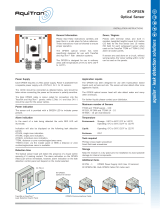 aquilar AquiTron AT-OPSEN Installation guide
aquilar AquiTron AT-OPSEN Installation guide
-
 nvent RAYCHEM BTV Installation and Maintenance Manual
nvent RAYCHEM BTV Installation and Maintenance Manual
-
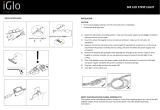 CDB iGlo Quick Manual
CDB iGlo Quick Manual
-
Ideal 46-403 Operating instructions
-
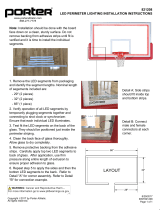 Porter BACKBOARD PERIMETER LED KITS Operating instructions
Porter BACKBOARD PERIMETER LED KITS Operating instructions
-
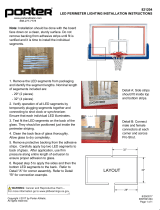 Porter BACKBOARD PERIMETER LED KITS Operating instructions
Porter BACKBOARD PERIMETER LED KITS Operating instructions
-
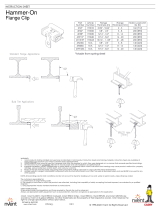 nVent CADDY 2H4 Hammer-On Flange Clip Operating instructions
nVent CADDY 2H4 Hammer-On Flange Clip Operating instructions
-
 nVent CADDY N00136 Pyramid Light-Duty Equipment Support Kit Operating instructions
nVent CADDY N00136 Pyramid Light-Duty Equipment Support Kit Operating instructions
-
 nvent Raychem TraceTek TT-FFS-EEC-100 Installation guide
nvent Raychem TraceTek TT-FFS-EEC-100 Installation guide
-
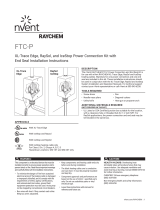 nVent RAYCHEM FTC-P Power Connection and End Seal Kit User manual
nVent RAYCHEM FTC-P Power Connection and End Seal Kit User manual
















